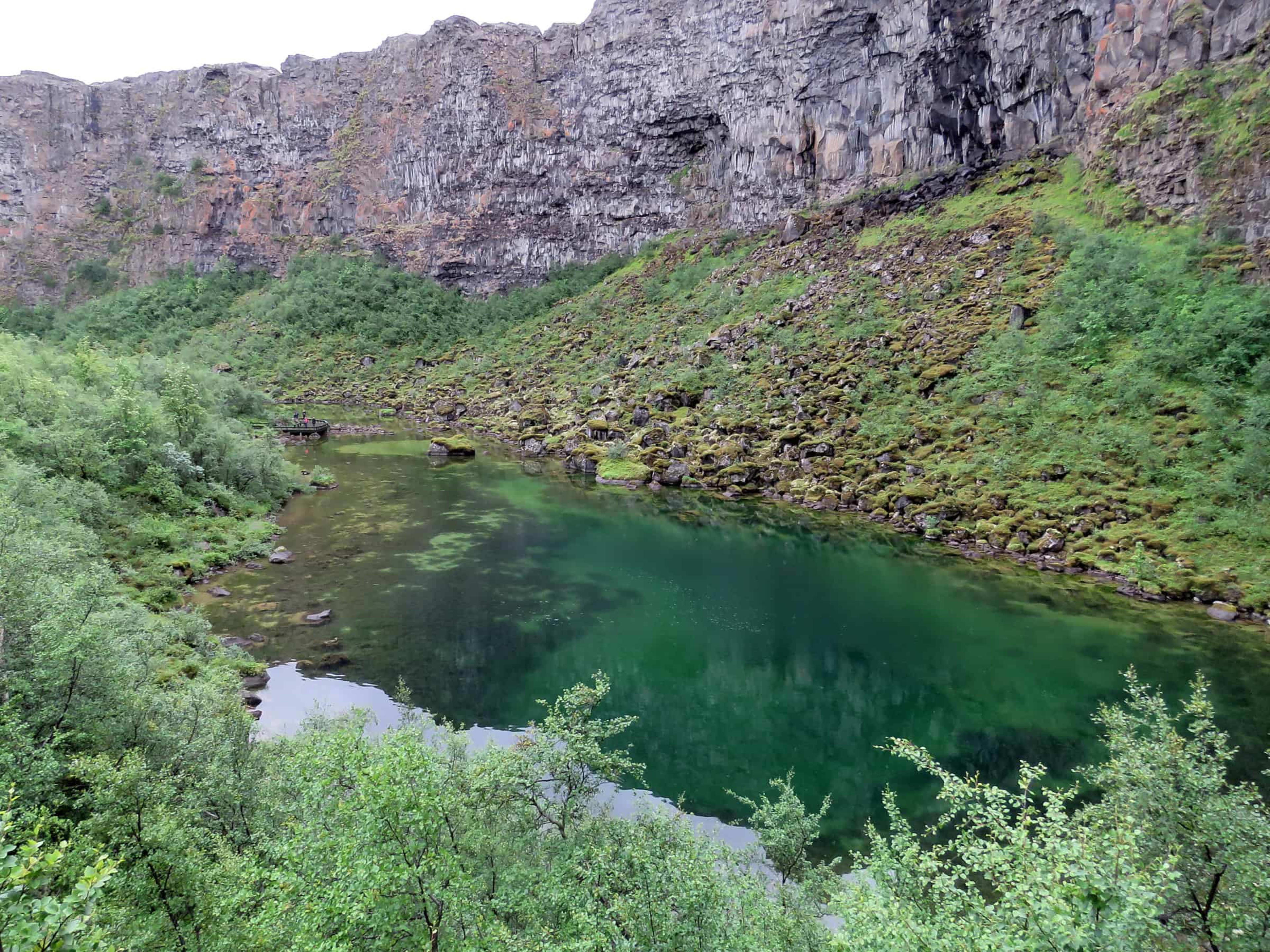Iceland has a rich history of folklore and legends. Being a small, isolated island close to the Arctic Circle the environment was the perfect breeding ground for tales of strange creatures and supernatural beings.
Influenced by the Nordic myths, Celtic fairy tales and, weirdly, Christianity, Icelandic folklore is unique and still plays a large part in the national identity. Enhanced by the dark winters and majestic and mysterious landscape these creatures are as much a part of life in Iceland as the rest of us.
- Experience local folklore for yourself on a vacation to Iceland.

Elves
Let’s start with the celebrities. I’m sure a lot of you have heard about the Icelandic elves and that (allegedly) 80% of Iceland’s population believes in them. In reality it’s more like most of us don’t really BELIEVE believe, we’re just not ready to say they don’t exist (you know, in case they do).
Stories of elves and the Hidden Folk have been around in Iceland for centuries. Their origins are thought to be from the Bible story of Eve’s dirty children. Preparing for God’s visit to the garden of Eden, Eve washed and cleaned her children. However she didn’t have time to get to them all and tried to hide the unwashed ones. God found out and cursed them to be forever invisible to man.
The Hidden Folk live in rocks and hills and Icelanders are very respectful of their homes, often going as far as curving roads around rocks that are believed to be Elf houses. In any case, it doesn’t pay to annoy the Hidden Folk. They are known to be vindictive and there are plenty of stories of them taking revenge on humans that have wronged them. One of their favorite tricks to play on humans is stealing their babies and leaving an old, cranky elf changeling in their place.
Though a consistent part of everyday life in Iceland, there are a few nights a year where they are especially powerful. If you sit at a crossroads on Midsummer’s night, the Hidden People will approach you and offer you gold and jewels. If you resist the temptation to accept, your wishes will come true, however if you don’t you will be driven mad.
They also used to visit people who stayed behind at home on Christmas Eve when everyone else went to church and tried to tempt them or drive them mad. However, New Year’s Eve is when the Hidden People move house and it’s thought to bring good luck to leave a little food out for them to have on their travels.

Trolls
According to Icelandic folklore, trolls lived in the mountains and only came down from them to forage for food. Trolls can only survive in the darkness of night (guess they just stayed home for the endless daylight in summer then) and if they were caught in the sunlight they would immediately turn to stone.
A few of these unlucky trolls can be seen all over the country, the most famous of which are the Reynisdrangar rock formations on the south shore. Legend has it that two trolls were trying to drag a three-mast ship to shore when the day broke and they were turned to stone.
The best-known, and perhaps most feared, troll in Icelandic folklore is without a doubt Grýla. She was the mother of all thirteen Yule Lads and she is known to eat naughty children, which is why all Icelandic children are exceptionally well-behaved in December. Visit the Troll Park in Fossatún to learn more about these craggy giants.
- Learn more about the Yule Lads and other Icelandic Christmas traditions.

Creatures & monsters
Iceland also has its fair share of monsters and mysterious creatures. The Lagarfljótsormur in Lagarfljót in Egilsstaðir is thought by many to be the cousin to Nessie herself in Scotland. Stories of this giant underwater worm-creature have been around since 1345 and it has been spotted as recently as 2012.
It is said to have grown from a small ‘heath worm’ placed on top of a gold ring by a local girl in order to guard it. When the girl returned to check on her ring the worm had grown so big that she threw it and the ring in the water where it continued to grow and hoard gold.
The Nykur sea horse is also a popular myth. The Nykur is usually found in lakes and rivers and it looks almost like a regular horse, except its hooves are backwards and it’s usually gray. The Nykur will try and get you to ride it but once you do it will run straight back to its lake or river and drown you.
So make sure you check the hooves of those friendly Icelandic horses you encounter on your travels. You can find out more about Icelandic monsters at the Icelandic Sea Monsters Museum in Bíldudalur.

Ghosts
It comes as no surprise that a country as dark and isolated as Iceland of yesteryear has plenty of ghost stories. Ask any Icelander and they will either tell you of their own experiences with the supernatural or one of the local legends.
One of the scariest ghost stories has to be the story of the deacon of Myrka. On his way to pick up his date Guðrún for a ball, the deacon fell off his horse and died. Not letting a small thing like a massive head wound and death deter him from true love, the deacon showed up at Guðrún’s house.
Alerted by the fact that he was unable to pronounce her name correctly (Guð means God in Icelandic and the dead cannot say the name of God so he called her Garún), Guðrún realized what was up and tried to escape as the deacon tried to drag her into his grave with him.
The name Móri is often given to Icelandic poltergeists. The Móri is a male ghost and usually haunts the same family for generations. The female ghosts are known as Skotta. Another famous ghost is Gunna, who wreaked havoc all over the Reykjanes peninsula until she was defeated by the wizard Eirikur frá Vogsosum and confined to the angry, bubbling hot spring Gunnuhver.
Come and look for elves yourself on an Iceland vacation. You can secure your trip with a 5% deposit today!

About the author
Áslaug is a scriptwriter and playwright by trade, seeking inspiration from local theaters and restaurants. The place she loves the most in Iceland is Skarðsvík beach on the Snæfellsnes peninsula, followed closely by the village of Húsavík in North Iceland. Like many Icelanders, she lives by the philosophy of Þetta reddast, or ‘it’ll be alright in the end!’.
View more posts by Áslaug